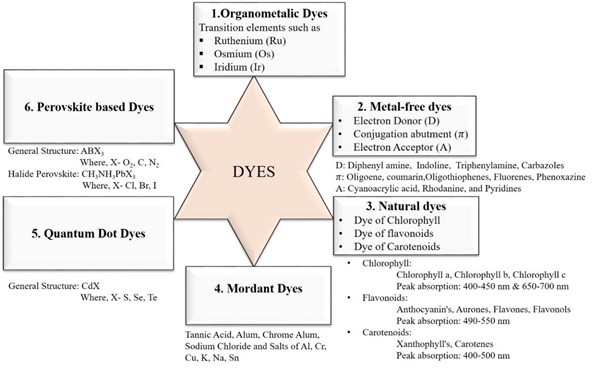Fri, Dec 13, 2024
[Archive]
Volume 20, Issue 1 (March 2023)
IJMSE 2023, 20(1): 1-23 |
Back to browse issues page
Download citation:
BibTeX | RIS | EndNote | Medlars | ProCite | Reference Manager | RefWorks
Send citation to:



BibTeX | RIS | EndNote | Medlars | ProCite | Reference Manager | RefWorks
Send citation to:
Dhanasekaran P, Marimuthu R. A Review on Dye-Sensitized Solar Cells (DSSCs), Materials and Applications. IJMSE 2023; 20 (1) :1-23
URL: http://ijmse.iust.ac.ir/article-1-2994-en.html
URL: http://ijmse.iust.ac.ir/article-1-2994-en.html
Abstract: (10070 Views)
Fossil fuels served as the main source of energy throughout the 1800s when the industrial revolution got underway. Countries started aiming for carbon-neutral footprints and lowered emissions as environmental degradation became more apparent. Numerous research projects have been undertaken to discover a photovoltaic device that can replace conventional silicon (Si)-based solar cells. Dye-sensitized solar cells (DSSCs) have undergone extensive research during the past three decades. Due to their straightforward preparation process, low cost, ease of production, and low toxicity, DSSCs have seen extensive use. The reader will be able to comprehend the numerous types of TCO layers, physical methods for depositing metal oxide on TCO thin films, materials for fabricating the various DSSC layers, and the various types of dyes included in DSSC as well as their components and structures. The reader's ability to construct the DSSC, gain a general understanding of how it operates, and increase the effectiveness of these devices' potential growth and development paths are all aided by this review. For these technologies to be debated and shown to be appropriate for a breakthrough in consumer electronics on the market, manufacturing, stability, and efficiency improvements must also be addressed in the future. An overview of current DSSC prototype development and products from major firms is presented.
Keywords: Organic Solar Cells, Dye-Sensitized Solar Cells, Perovskite Solar Cells, Efficiency, Commercialization
Type of Study: Review Paper |
Subject:
3Dprintable materials processed using a novel AM process
Send email to the article author
| Rights and permissions | |
 |
This work is licensed under a Creative Commons Attribution-NonCommercial 4.0 International License. |







